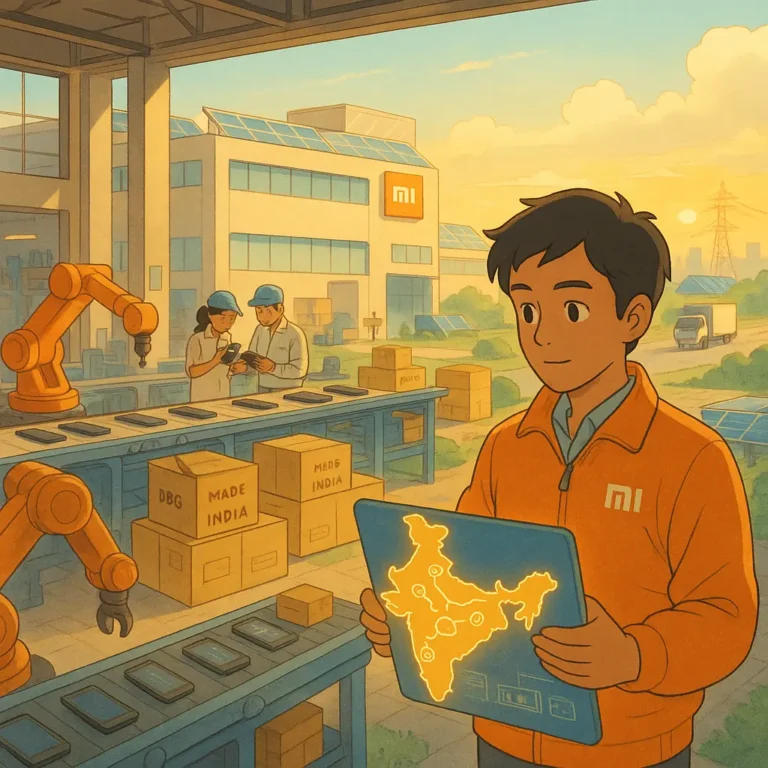
Chicken Republic’s Supply Chain
Many in Africa’s fast-food industry often assume that growth means franchising and branding. Both of these do have their benefits, but Chicken Republic’s supply chain took a different strategy.
Key Nuggets
- Chicken Republic scaled using a tightly controlled and centralized supply chain.
- It locally sourced 99% of its ingredients, built its own kitchens and warehouses, and implemented strict operational discipline and training.
- The supply chain’s approach of leveraging agility and standardization helped Chicken Republic scale quickly while maintaining low prices and consistent quality.
- African supply chains can replicate this by simplifying operations, localizing inputs, leveraging technology for visibility, and establishing strategic partnerships for delivery.
Fast Food Doesn’t Win By Taste Alone.
Most of the stakeholders in Nigeria’s quick-service food market focus on recipes, ambiance, and pricing. But Chicken Republic’s supply chain didn’t just chase taste. The company built its empire by mastering food supply chain operations.
While others outsourced and improvised, Chicken Republic’s supply chain controlled every link.
That control turned into consistency, consistency turned into trust, and trust brought scale.
Why Chicken Republic Focused on Supply Chain First
Nigeria’s food sector is volatile. Prices fluctuate rapidly, logistics can collapse, and imports can stall. Yet, from the customer’s perspective, there is no excuse for poor quality. That alone can shut down a store in days.
From the beginning, Chicken Republic knew it couldn’t grow on taste alone. The company leadership knew it needed a reliable supply chain engine. Even though that meant going local, centralized, and staying disciplined. Today, over 99% of its ingredients are sourced from Nigeria.
The fast food giant operates central kitchens and warehouses in all major cities it serves, including Lagos, Abuja, and Port Harcourt.
These facilities are the arteries of the brand. Instead of managing their own sourcing, stores order everything from headquarters. This way, they can keep prices low and stockouts rare.
Read more: Lessons from Nike’s $100M Inventory Glitch in 2000.
How Chicken Republic Implemented Its Winning Supply Chain
Chicken Republic’s supply chain strategy isn’t complex; it’s consistent. And that is because the company bets on local partners, tight systems, and end-to-end control.
1. Centralized Procurement and Warehousing
Chicken Republic doesn’t leave purchasing to chance. It negotiates as one buyer, then distributes to stores from its central points. The bulk purchase strategy gives the company incredible leverage when negotiating.
On major equipment and core ingredients, Chicken Republic’s supply chain reduced costs by up to 30% through volume deals.
Each warehouse serves as a distribution hub, so stores don’t hoard inventory. They request what they need when they need it, making replenishment more predictable. This tight loop reduces waste, maintains freshness, and ensures control.
2. In-House Production Facilities
Chicken Republic knows very well that quality declines when control is lost, which is why the company has kept its production internal to maintain greater control.
For example, a central kitchen in Lagos prepares spice mixes and semi-finished products that are then distributed across the entire network.
Chicken Republic facilities also follow strict quality checks. They batch-cook, test, and ship based on store demand. The company even runs its own quality assurance lab to screen incoming ingredients.
3. Local Sourcing and Cold Chain Delivery
Over 99% of Chicken Republic’s supply chain inputs are sourced from Nigerian suppliers. But the strategy is not about charity or helping local farmers; it’s simply smart business.
By staying local, Chicken Republic’s supply chain avoids dollar swings, import delays, and foreign supply risks. Local farmers benefit, but so does the company’s bottom line.
Cold-chain delivery keeps perishables fresh. Every day, refrigerated trucks deliver vegetables and chicken to outlets, which helps maintain shelf life and ensure food safety.
Do you want more supply chain stories like this? Subscribe here
4. Standardized Operations and Staff Training
Chicken Republic’s supply chain doesn’t just build kitchens—it builds people. Every role, from cook to regional manager, follows a set process. And the staff are trained using repeatable systems, which ultimately reduces variation and keeps stores efficient.
The operating model is also process-driven. Every action is timed, measured, and tracked. This discipline means new outlets can open quickly without chaos.
5. Technology and Visibility
Chicken Republic’s ERP system tracks sales, inventory, procurement, and production in real-time. With Oracle ERP powering the backend, the supply chain team can see what is selling, what is in stock, and what needs restocking across hundreds of stores.
For Chicken Republic’s supply chain, data isn’t just for insight. It’s for action. Inventory is ordered before stockouts occur, prices are updated in response to market movements and real sales, not guesswork, inform promotions.
6. Smart Delivery Partnerships
Instead of building its own delivery fleet, Chicken Republic partnered with Chowdeck and Glovo. These last-mile logistics partners bring agility without capital drain. In 2024, Chicken Republic made Chowdeck its exclusive partner in key cities.
Both companies stated that the move would reduce delivery time and costs. And it worked. Customers now get hot food faster without putting a drain on the company’s resources and outlets.
By outsourcing delivery but keeping food production in-house, Chicken Republic found a balance. It controls what matters—quality. And outsources what scales—delivery.
Read more: Hyundai’s Semiconductor Strategy: Navigating the 2021 Chip Shortage.
Why Chicken Republic’s Supply Chain Strategy Works
Chicken Republic’s supply chain strategy isn’t glamorous. But it works because:
1. Cost Reduction
Centralized buying and local sourcing enable Chicken Republic to reduce costs where they matter most, especially with raw materials, logistics, and equipment. That’s why it can offer quality food at lower prices, even in the face of inflation.
2. Speed and Scalability
Standardized kitchens and warehouses mean the company can open new stores seamlessly without having to start from scratch. Staff know the system, and the system knows the demand.
3. Resilience in Crisis
When COVID-19 hit, Chicken Republic’s supply chain didn’t panic. It shifted to digital sales, relied on delivery partners, and maintained a steady supply. When other fast food supply chains paused operations, Chicken Republic adapted.
4. Quality Consistency
By owning its production kitchens and QA lab, Chicken Republic doesn’t rely on vendor quality. It sets its own benchmarks. That means customers get the same experience in Lagos, Abuja, or Port Harcourt.
5. Community Trust
Sourcing locally isn’t just economic; it builds goodwill. Farmers become partners, suppliers become allies, and customers see a brand supporting Nigeria. That loyalty feeds growth.
Read more: Supply Chain Lessons from the GM Ventilator Project 2020.
Lessons For Food Supply Chains Across Africa
Chicken Republic’s supply chain model may not be unique, but it is disciplined. Here’s what any African supply chain can take away:
1. Centralize What You Can
If you have 50 outlets ordering independently, you’re overpaying. However, centralized procurement increases bargaining power and gives you more control.
For example, a national distributor for retail chains saves up to 20% on costs by aggregating purchases into a single source contract.
2. Localize What You Should
In unstable economies, local sourcing beats imports. It shortens lead times and avoids foreign exchange (forex) volatility. But it needs quality control systems.
For example, a West African beverage company switched to local starch suppliers, saving 18% in cost and reducing lead time from 5 weeks to 4 days.
3. Build Repeatable Processes
When teams follow the same process, scale becomes easier. Your 10th warehouse should look like your first. Example: A pan-African logistics firm utilizes the same SOP template for all hubs, resulting in a 40% reduction in training time.
4. Use Tech for Visibility
ERP isn’t a luxury. It’s the nervous system of supply chains. Without it, you’re blind. Visibility prevents stockouts, detects waste, and balances supply.
5. Partner Smart for Last Mile
Don’t build what someone else already does better. Focus on control, not coverage.
Example: A Nigerian FMCG firm doubled e-commerce sales by plugging into Jumia’s last-mile network instead of setting up its own fleet.
Do you want more supply chain stories like this? Subscribe here
Wrap Up
Chicken Republic’s supply chain proves that success in food retail is about execution, not excitement. Africa doesn’t need more imported strategies. What it needs are bold, yet simple supply chain strategies effectively implemented, locally sourced, centrally controlled, and built to scale.
Operations aren’t an afterthought. They’re the brand. If you fix your supply chain, everything else works better. And in a continent like ours, that’s how you win.

Obinabo Tochukwu Tabansi is a supply chain digital writer (Content writer & Ghostwriter) helping professionals and business owners across Africa learn from real-world supply chain wins and setbacks and apply proven strategies to their own operations. He also crafts social content for logistics and supply chain companies, turning their solutions and insights into engaging posts that drive visibility and trust.







